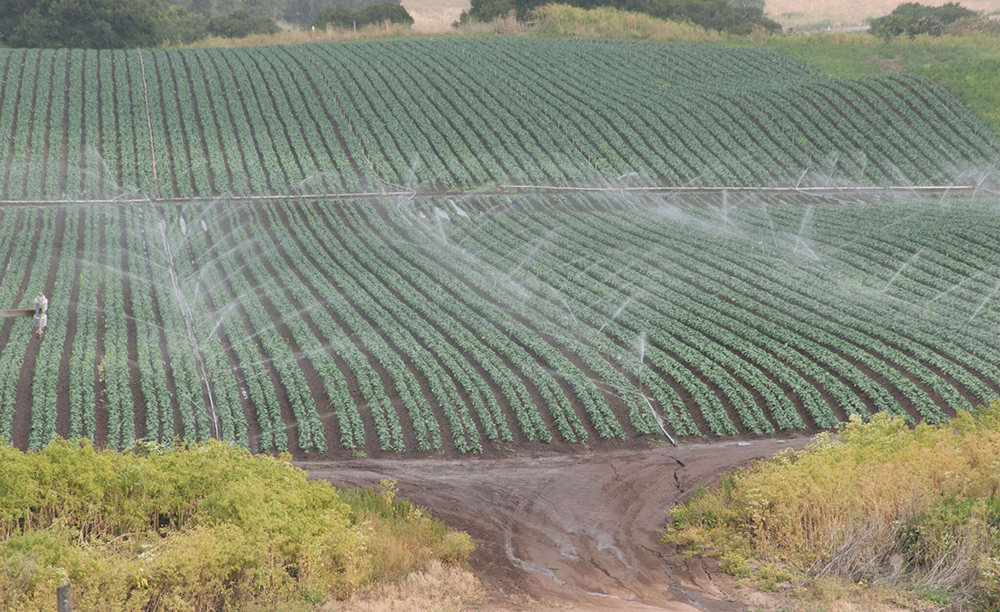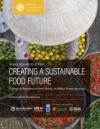Authors and Contributors, Acknowledgments

Authors and Contributors, Acknowledgments
-
Authors and Contributors
Tim Searchinger (WRI and Princeton University)
Lead author
Richard Waite (WRI) Craig Hanson (WRI) Janet Ranganathan (WRI)
Lead modeler: Patrice Dumas (CIRAD)
Editor: Emily Matthews
Tim Searchinger, Richard Waite, and Tim Beringer (Humboldt University at Berlin) contributed to development of the GlobAgri-WRR model, as did a number of researchers from the Centre de coopération internationale en recherche agronomique pour le développement, and the Institut national de la recherche agronomique, including Agneta Forslund, Hervé Guyomard, Chantal Le Mouël, Stéphane Manceron, and Elodie Marajo-Petitzon.
Major GlobAgri-WRR model subcomponents include a livestock model with lead developers Mario Herrero (Commonwealth Scientific and Industrial Research Organisation) and Petr Havlík (IIASA), with additional contributions from Stefan Wirsenius (Chalmers University of Technology); a land-use model with lead developer Fabien Ramos (European Commission Joint Research Centre); a rice model with lead developer Xiaoyuan Yan (Chinese Institute for Soil Science); a nitrogen emissions model with lead developer Xin Zhang (Princeton University); and an aquaculture model with lead developers Mike Phillips (WorldFish) and Rattanawan Mungkung (Kasetsart University).
A number of individuals were coauthors on working papers that serve as the foundation for the full report, this synthesis report, and many of the menu items profiled therein. They include Tapan K. Adhya (KIIT University, India), Tamara Ben Ari (INRA), Maryline Boval (INRA), Tim Beringer (Humboldt University at Berlin), Malcolm Beveridge (WorldFish), Randall Brummett (World Bank), Sarah Castine (WorldFish), Philippe Chemineau (INRA), Nuttapon Chaiyawannakarn (Kasetsart University), Ayesha Dinshaw (WRI), Patrice Dumas (CIRAD), Dennis Garrity (World Agroforestry Centre), Jerry Glover (U.S. Agency for International Development), Sarah Harper (Oxford Institute of Population Ageing and University of Oxford), Ralph Heimlich (Agricultural Conservation Economics), Debbie Hellums (International Fertilizer Development Center), Norbert Henninger (WRI), Sadasivam Kaushik (INRA), Lisa Kitinoja (The Postharvest Education Foundation), Jean-Marc Lacape (CIRAD), George Leeson (Oxford Institute of Population Ageing and University of Oxford), Bruce Linquist (University of California at Davis), Brian Lipinski (WRI), David Makowski (INRA), Mike McGahuey (U.S. Agency for International Development), Rattanawan Mungkung (Kasetsart University), Supawat Nawapakpilai (Kasetsart University), Michael Phillips (WorldFish), Chris Reij (WRI), Katie Reytar (WRI), Sara Scherr (EcoAgiculture Partners), Daniel Vennard (WRI), Reiner Wassmann (International Rice Research Institute, Philippines), Robert Winterbottom (WRI), and Xiaoyuan Yan (Institute for Soil Science, Chinese Academy of Sciences).
Acknowledgments
We are pleased to acknowledge our institutional strategic partners, who provide core funding to WRI: Netherlands Ministry of Foreign Affairs, Royal Danish Ministry of Foreign Affairs, and Swedish International Development Cooperation Agency.
The authors are grateful to the following peers who provided critical reviews and helpful suggestions to this synthesis report: Gary Atlin (Bill and Melinda Gates Foundation), Tobias Baedeker (World Bank), Erin Biehl (Johns Hopkins University Center for a Livable Future—JHU-CLF), Randall Brummett (World Bank), Rebecca Carter (WRI), Tim Christophersen (UN Environment), Ed Davey (WRI), Chris Delgado (WRI), Adriana Dinu (UNDP), Natalie Elwell (WRI), Jamison Ervin (UNDP), Roger Freedman (2Blades Foundation), James Gaffney (DuPont), Tess Geers (Oceana), Charles Godfray (Oxford Martin Programme on the Future of Food), Hidayah Hamzah (WRI), Nancy Harris (WRI), Mario Herrero (Commonwealth Scientific and Industrial Research Organisation), Jillian Holzer (WRI), Lisa Johnston (WRI), Doyle Karr (DuPont), Kelly Levin (WRI), David Lobell (Stanford Center on Food Security and the Environment), James Lomax (UN Environment), Jared Messinger (WRI), Charles McNeill (UN Environment), Joseph Monfort (DuPont), James Mulligan (WRI), Carlos Nobre (Coordenação de Aperfeiçoamento de Pessoal de Nível Superior), Lily Odarno (WRI), Mark Peterson (DuPont), Michael Phillips (WorldFish), Becky Ramsing (JHU-CLF), Raychel Santo (JHU-CLF), Frances Seymour (WRI), Fred Stolle (WRI), Guntur Subbarao (Japan International Research Center for Agricultural Sciences), Rod Taylor (WRI), Philip Thornton (International Livestock Research Institute), Robert Townsend (World Bank), Peter Veit (WRI), Sara Walker (WRI), Arief Wijaya (WRI), Stefan Wirsenius (Chalmers University of Technology), Christy Wright (DuPont), Graham Wynne (WRI), and Edoardo Zandri (UN Environment).
The authors extend a special thanks to Nikos Alexandratos (FAO) and Jelle Bruinsma (FAO), who were generous in providing information and guidance about the FAO agricultural projections to 2050; Michael Obersteiner (IIASA), who provided information about the GLOBIOM model; Tom Kram Fam (Netherlands Environmental Assessment Agency), who provided information for analyzing the IMAGE model results, and Benjamin Bodirsky (Potsdam Institute for Climate Research) for his thorough review of the GlobAgri-WRR model.
In addition, the authors thank several WRI colleagues who provided research, data, analysis, and editing services in support of this synthesis report: Abraar Ahmad, Austin Clowes, Ayesha Dinshaw, Tyler Ferdinand, Rutger Hofste, Tara Mahon, Cecelia Mercer, Gerard Pozzi, Yangshengjing Qiu, and Paul Reig. We thank our colleague Liz Goldman for preparing several of the maps in the synthesis report.
This synthesis report was improved by the careful review of its framing and argumentation by Emily Matthews, Daryl Ditz, Laura Malaguzzi Valeri, and Liz Goodwin. The synthesis report was shepherded through the publication process by WRI’s experienced publications team, particularly Emily Matthews and Maria Hart. We thank Alex Martin and Bob Livernash for their careful copyediting. We thank Carni Klirs for synthesis report design and layout. In addition, we thank Bill Dugan, Billie Kanfer, Julie Moretti, Sarah Parsons, Romain Warnault, and Lauren Zelin, for additional design, strategy, and editorial support.
WRI is deeply grateful for the generous financial support for this synthesis report—and for the series of working papers underlying this report—from the Norwegian Ministry of Foreign Affairs, the United Nations Development Programme, United Nations Environment, the World Bank, and the institutional strategic partners listed above. In addition, we would like to thank the Bill & Melinda Gates Foundation for supporting background research on the “improving soil and water management” menu item.
Photo credits
Cover: Getty images, Pgs. ii, iii Sande Murunga/CIFOR, Pg. iv Pacific Disaster Center, Pg. 4 Thomas Hawk, Pg. 6 Julien Harne, Pg. 12 Ella Olsson, Pg. 20 Ollivier Girard/CIFOR, Pg. 24 IAEA Image Lab, Pg. 25 World Agroforestry Centre, Page 26. Dennis Jarvis, Pg. 28 Neil Palmer/CIAT, Pg. 30 Mokhamad Edliadi/CIFOR, Pg. 33 Patrick Shepherd/CIFOR, Pg. 35. Pedro Brancalion/Bioflora, Pg. 37 Nanang Sujana/CIFOR, Pg. 38 Heba El-Begawi/WorldFish, Pg. 42 Isabell Schulz, Pg. 46 Bob Nichols/USDA Natural Resources Conservation Service, Pg. 47 CIAT, Pg. 49 Africa Rice Center, Pg. 50 InnoAfrica, Pg. 52 Michael Trolove, Pg. 53 Kyle Spradley/Curators of the University of Missouri, Pg. 54 Anguskirk, Pg. 60 Kate Evans/CIFOR, Pg. 64 Ollivier Girard/CIFOR, Pg. 66. Axel Fassio/CIFOR, Pg. 67 Icaro Cooke Vieira/CIFOR, Pg. 73 RachelC.Photography, Pg. 74 Aditya Basrur, Pg. 77 Sharada Prasad.About the Partners
WORLD BANK GROUP
The World Bank is a vital source of financial and technical assistance to developing countries around the world—a unique partnership to reduce poverty and support development. The World Bank Group consists of five organizations managed by their member countries. Visit the World Bank online at http://www.worldbank.org.UNITED NATIONS ENVIRONMENT
Established in 1972, UN Environment is the voice for the environment within the United Nations system. It acts as a catalyst, advocate, educator, and facilitator to promote the wise use and sustainable development of the global environment. Visit UN Environment online at http://www.unenvironment.org.UNITED NATIONS DEVELOPMENT PROGRAMME
Since 1966, UNDP has partnered with people at all levels of society to help build nations that can withstand crisis and drive and sustain the kind of growth that improves the quality of life for everyone. UNDP offers global perspective and local insight to help empower lives and build resilient nations. Visit UNDP online at http://www.undp.org.CIRAD
Le Centre de coopération internationale en recherche agronomique pour le développement (CIRAD) is a French research center working with developing countries to tackle international agricultural and development issues. Visit CIRAD online at http://www.cirad.fr or http://www.cirad.fr/en.FRENCH NATIONAL INSTITUTE FOR AGRICULTURAL RESEARCH
L’Institut national de la recherche agronomique (INRA) produces scientific knowledge and works for economic and social innovation in the areas of food, agriculture, and the environment. Visit INRA online at http://institut.inra.fr or http://institut.inra.fr/en.About WRI
World Resources Institute is a global research organization that turns big ideas into action at the nexus of environment, economic opportunity, and human well-being.Our Challenge
Natural resources are at the foundation of economic opportunity and human well-being. But today, we are depleting Earth’s resources at rates that are not sustainable, endangering economies and people’s lives. People depend on clean water, fertile land, healthy forests, and a stable climate. Livable cities and clean energy are essential for a sustainable planet. We must address these urgent, global challenges this decade.
Our Vision
We envision an equitable and prosperous planet driven by the wise management of natural resources. We aspire to create a world where the actions of government, business, and communities combine to eliminate poverty and sustain the natural environment for all people.
Our Approach
Count It
We start with data. We conduct independent research and draw on the latest technology to develop new insights and recommendations. Our rigorous analysis identifies risks, unveils opportunities, and informs smart strategies. We focus our efforts on influential and emerging economies where the future of sustainability will be determined.
Change It
We use our research to influence government policies, business strategies, and civil society action. We test projects with communities, companies, and government agencies to build a strong evidence base. Then, we work with partners to deliver change on the ground that alleviates poverty and strengthens society. We hold ourselves accountable to ensure our outcomes will be bold and enduring.
Scale It
We don’t think small. Once tested, we work with partners to adopt and expand our efforts regionally and globally. We engage with decision-makers to carry out our ideas and elevate our impact. We measure success through government and business actions that improve people’s lives and sustain a healthy environment.
Each World Resources Institute report represents a timely, scholarly treatment of a subject of public concern. WRI takes responsibility for choosing the study topics and guaranteeing its authors and researchers freedom of inquiry. It also solicits and responds to the guidance of advisory panels and expert reviewers. Unless otherwise stated, however, all the interpretation and findings set forth in WRI publications are those of the authors.
Maps are for illustrative purposes and do not imply the expression of any opinion on the part of WRI, concerning the legal status of any country or territory or concerning the delimitation of frontiers or boundaries.
Copyright 2018 World Resources Institute.
This work is licensed under the Creative Commons Attribution 4.0 International License. To view a copy of the license, visit http://creativecommons.org/licenses/by/4.0/

